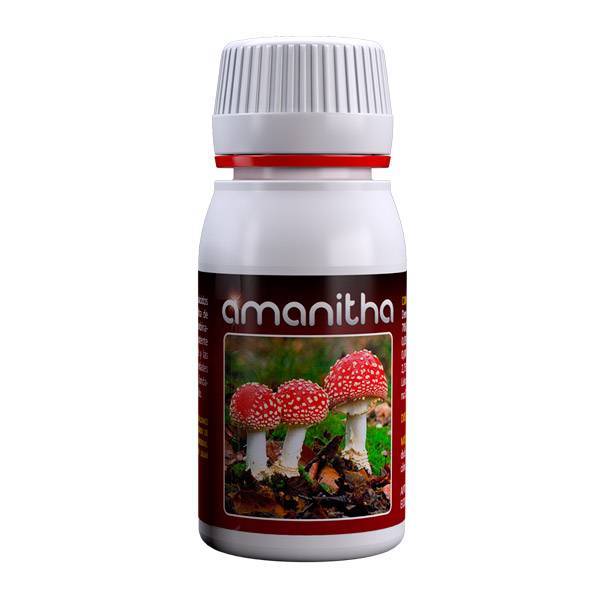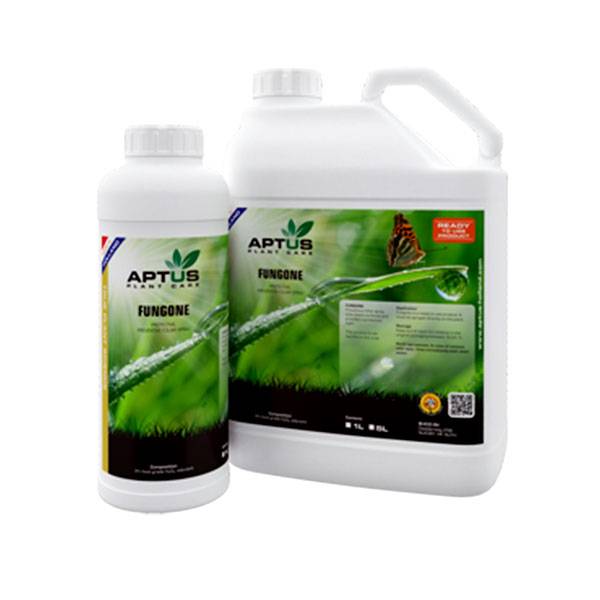Dutch tulips are one of the most popular flowers to be found in gardens. The secret of their popularity lies not only in their easy care, but also in the number of interesting types of tulips. The tulip has won the hearts of Europeans, but it should be noted that it can also be found in Africa and Asia. Before deciding on this plant, be sure to check out how to plant tulips, how to provide them with the best conditions, and how to care for them. We have prepared a comprehensive guide that you may find useful for growing tulips.
Index of topics
- Tulips: what they are and what they look like
- How to grow tulips
- Types of tulips
- When to plant tulips
- How to plant tulips
- Growing tulips in pots
- How to fertilize tulips
- Care of tulips
- How to propagate tulips
- Where to buy tulip bulbs
- How to take care of tulips in the winter
- The most common diseases of tulips
- When to plant tulips so that they bloom at Easter
- When to plant tulips
- 12 essential types of tulips in your garden
The tulip (Tulipa L.) is classified as a bulb plant. It is a perennial plant of the Liliaceae family. However, the bulbs it forms are annuals. There are many areas where tulips grow naturally: European countries, Kazakhstan, China and Japan. But the Netherlands is considered to be the capital of tulips. Although there are many types of tulips in the world, the structure of these plants is always the same. There is usually only one flower growing on the stem. It has an impressive calyx and corolla. Depending on the variety, the flowers are of one or more colors, have different sizes and the corolla can be smooth, pointed or irregular. There are some unique types of tulips in the world, with multiple flowers growing on a single branching stem.
How to grow tulips: what is the best soil for them?
Tulips are not very demanding plants, so they can grow in most gardens. They need a light soil. A rich substrate with a pH level of 6.5 - 7.5 offers the best conditions, as the finest flowering can be expected. Among the best soils we recommend the
Canna Bio Terra Plus, a precious blend of white peat and bark shavings, which have natural anti-mold properties, but less fertile soil can also be used. Remember that all types of tulips prefer full sun, so make sure other plants don't block the light.

The types of tulips
Tulips can be classified in many different ways, so it is possible to distinguish the most popular varieties of each group. The most common types of tulips fall into the following groups:
- early flowering,
- medium flowering,
- late flowering.
In addition, single-color, multicolored, vase, garden, fragrant and mountain tulips can also be distinguished.
When to plant tulips?
Planting of tulips is similar for most types and should be done in the fall. But, as experts point out, the best time to plant tulips is between September and October, although it depends a lot on the weather conditions. If there is a significant drop in temperatures in September, it is best to plant the tulips earlier, before the first frosts. Do not plant tulips if the soil temperature is low. 15-16 ° C (59-60.8 F) is the minimum.
How to plant tulips
Have you never handled these plants and are wondering how to plant tulips? This is the simplest part, so don't worry. Just choose the right spot, dig holes 20 cm deep, insert the bulbs and cover them. Tulip flowers look best if they form rows in flower beds. Keep this in mind when planting them. Make sure you keep adequate distance between the plants. They shouldn't come 10cm (4 inches) closer to each other. If you have had pests in your garden in the past, think of a solution to protect the bulbs. It's not complicated at all: just pour some gravel into the hole in the ground.
Growing tulips in pots
Tulips need to grow in pots but they need specific conditions. This plant cannot be grown anywhere in the world. The bulbs of these flowers are planted in the autumn months, if you plant them before or after the bulbs surely will not thrive.
You need pots between 30 and 40 cm for the tulips to grow well. In Do not fill the pots to the top with soil. Put the tulip bulbs in a circle together, they must touch each other. Don't sink them too deep into the ground, just double their length. Cover with soft soil.
Create an easy grid to protect the bulbs from pests. You can use a piece of flexible plastic netting or make your own. It's easy, use the potting wire (the one with the green plastic coating). Measure the vase, cut 4 pieces of the size of the vase. Join the pieces to form a circle. Then cut several pieces of thread and twist them around the circle forming a kind of net. It doesn't have to be perfect. Then place this net on the ground. This deters parasites.
Water after planting, without overdoing the bulbs generally do not need excess water. You won't water again until spring comes
Put the pots in a dark place where there is no heating, nor is the temperature below freezing. The temperature can be very cold but never below freezing. Look for a dark area of ??the house that has these conditions. If you live in a warm area, it is difficult for you to grow tulips except in greenhouse conditions.
A few weeks before spring comes, check the pots and water lightly. When you see that the plants begin to sprout slightly from the ground, remove them from a dark place so that they receive light. They will bloom just as if they were in the ground. You shouldn't worry too much about it, just moisten the soil when you notice it's dry.
Fertilize the tulips
Tulips are a beautiful but fickle flowering bulb that is grown in a large number of gardens. Their bright flowers on tall stems make them a welcome spot in spring, but tulips are also known to not always return year after year. Proper tulip fertilization can go a long way in making sure your tulips come back year after year. Read on for tips on how to fertilize tulip bulbs and when to fertilize tulips.
When to fertilize tulips
You should fertilize tulips once a year. The best time to fertilize tulips is in the fall. Right now, the tulip bulbs are taking root to prepare for winter and are in the best shape possible to absorb the nutrients in the tulip bulb fertilizer. Don't fertilize tulips in spring. The bulb roots will die shortly thereafter to remain dormant for the summer and will not be able to absorb the optimum amount of nutrients from the tulip bulb fertilizer.
Tips for fertilizing tulip bulbs
- While many people think they should apply tulip fertilizer in the hole when the tulip bulb is planted, this is not true. This can damage the newly emerging roots of tulip bulbs and cause them to "burn" when they come in contact with the concentrated fertilizer placed beneath them. Instead, always fertilize from the top of the soil.
This will allow the tulip's fertilizer to become less concentrated, as it filters down to the roots and doesn't burn them.
The best type of tulip bulb fertilizer will have a nutrient ratio of 9-9-6. One of our favorite fertilizers for this type of flower that gives excellent results is Activera by BioBizz: seeing for believing!

When fertilizing tulips, you could also use a slow release fertilizer such as Vertafort pellets. This will ensure that nutrients are supplied to the tulip bulb roots on an ongoing basis.The release of tulip bulb fertilizer can cause nutrients to run out before the tulip bulbs have a chance to absorb them. If you want to use an organic blend to fertilize tulip bulbs, you can use a blend of equal parts blood meal, green sand, and bone meal. Keep in mind that using this organic tulip fertilizer can attract some types of wildlife to the area. Taking the time to fertilize your tulips will help them survive the winter better and come back year after year. Knowing the correct steps to fertilize tulip bulbs and when to fertilize tulips will ensure that your efforts to give your tulips an extra boost don't go to waste.

Care of tulips
The tulip is not a very problematic plant to care for, but there are several basic measures that need to be taken into consideration. Regular watering is key here, especially if temperatures are warm. It is very important to know what to do with tulips after they have blossomed. Damaged flowers must be removed. In no case do you have to do anything with the stems and leaves. They must dry naturally. When they do, it's a sign that you can dig up the bulbs and store them until replanting.
Tulip Care: Do They Need Special Fertilizer?
Tulips bloom for a relatively short time. This is why many people wonder if it makes sense to pay. It turns out that it is the absolute essential, thanks to which these flowers will last longer. A well-fed plant becomes stronger before the intense flowering season. Therefore, special products increase the chances that the bulb will survive in the warehouse after it is unearthed.
How to propagate tulips
Propagating tulips is a very simple process. It is done by dividing the bulbs. When tulips bloom, the planted bulbs produce child bulbs, also called scions. When the plants finish flowering and are dug out of the ground, they are divided and allowed to dry. This way they are ready to be planted or sold.
Where to buy tulip bulbs
Ready-to-plant tulip bulbs can be purchased at any garden store. It all depends on the types of tulips you want. The most popular are also available in supermarkets in the plants section. If you want to have unique tulip flowers in your garden, you can search for them on the web. Many professional plant growers offer their products there. Keep in mind, however, that if you choose less standard varieties, you may have to pay more.
How to take care of tulips in the winter
Tulips overwinter in the ground where they were planted in the fall. If the winter is exceptionally cold and low and sub-zero temperatures prevail for a long time, it may be decided to cover the place where the tulips are planted. This way you make sure they don't freeze.
The most common diseases of tulips
Botrytis is the biggest threat that can affect tulips and other spring plants. It can cause the whole plant to wither. In this case, the most important thing is preventive measures, such as spraying with antifungal products. Fusarium wilt is also dangerous. It is recognized by the yellowing and loss of flexibility of the leaves. This disease cannot really be prevented, as infected bulbs are one of the most common causes.
Botrytis: an excellent product for preventing Botrytis and treating the first infestations is Amanitha Muskaria by Agrobacterias: it is a specific product for killing infestations of fungi, but which also gives good results on other types of mold, such as botrytis. It is a blend containing plant protein amino acids that promotes recovery from disease, relieves stress in plants, strengthening their defenses and stimulating growth and production. Limit the appearance of pathogens.

Fusarium: includes a rather large group of hyphal fungi, omnipresent molds in the soil capable of causing damage to roots, tubers and rhizomes. APTUS Fungone is a preventive protective spray that reduces the problems caused by pathogens on the leaves, tubers and rhizomes and increases the plant's resistance to future attacks. This product helps prevent fungal, bacterial and viral problems by cleaning plant surfaces and creating unfavorable conditions for the development of pathogens. It also prevents future infections by creating a protective layer.

When to plant tulips so that they bloom at Easter
If you want tulips to bloom in the spring, you need to plan: plant them in the fall. The period from early September to mid-October is the best time to plant tulips. It all depends on the weather conditions, as plants need to be able to take root before the first frosts. If the temperature drops quickly, you need to start planting tulips early.
When to plant tulips
Regardless of the type, tulips should be planted in the fall. Early or late flowering does not depend on the time of sowing, but on the species and classification of the plants.
Tulips can be planted as long as the soil temperature does not rise above 16 ° C (60.8 F). In this way, the soil provides the conditions for the tulips to take root.
12 essential types of tulips in your garden
Tulips have at least 75 bulb groups and each can have hundreds of varieties. Most of the species are native to southern Europe and eastern Asia, although the name tulipa is believed to derive from the Persian word for turban, older species have been found in southern China.
In this guide we will identify 12 of its main varieties, which we personally believe are among the most important:
Rembrandt tulips
We will start this list with the tulip which we believe is the most exotic and colorful that I have seen, this variety includes two or more colors, mixing them in discontinuous stripes. This Rembrandt version is the result of applying an infection to the bulbs, but the current varieties are disease free and were bred for their unique and original appearance.
This variety usually has a base color, usually red, white, or yellow, with random stripes running across the petals. Although this variety is very similar to Darwin's tulips, Rembrandts have the classic cup shape.
This variety has a very short lifespan, so it should be replaced every two years.
Planting depth: At least 10 cm from the ground.
Plant height: 35 to 60 cm.

Hybrid Darwin Tulips
This species is one of the tallest existing tulips, reaching 80 centimeters in height in some cases. Created in the Netherlands, product of the cross between the Darwin tulip and the Fosterina Madame Lafeber variety. Due to its height, this variety is a favorite for flower arrangements around the world.
It is advisable to plant this variety sheltered from the winds, as due to its great height it is very easy for the leaves to be stripped of the spring winds, remember that this variety together with the Triumph and Cottage varieties must be planted at a minimum distance between them of 15 centimeters.
Planting depth: 10-15 cm of soil.
Plant height: 50 to 80 cm.

Triumph tulips
The Triumph category comprises the largest selection. When buying bags of multi-colored bulbs, most often they are tulips from this group. They are medium sized plants with single petal flowers in the classic cup shape. This variety was born from a cross between the original Darwin tulips and the Single-Early class tulips.
Do you want to dedicate yourself to the commercial cultivation of tulips in Chile? First of all, I recommend that you read this study by the Observatory for Agricultural Innovation - OPIA
Available in a wide range of pastel, bright and two-tone shades, the Triumph variety is ideal for adding color to your garden.
Planting Depth: At least 20cm deep, to ensure several years of color.
Plant height: 50 to 60 cm.

Curly Sue or fringed tulips
The Curly Sue category or commonly known as "fringed tulips" has undergone genetic mutations, which give them the impression of having fringes on the edge of their petals. As they divide into many different groups, the size and flowering times vary considerably for each variety.
Not as common as the Darwin or Emperor varieties, the colors of these flowers include red, pink, white, purple, yellow and bicolor. The "Cummins" variety stands out because the purple petals contrast nicely with the white stripe.
Planting depth: 2 to 3 cm of soil.
Plant height: 30-35cm.

Kaufmannian tulips
Kaufmanniana tulips originated from a species native to the region now known as Turkestan in Kazakhstan. They are long-lived tulips that require very little care.
They are short in stature, making them suitable for high wind areas where taller tulips frequently break during the spring thunderstorms so common today in south-central Chile. This perennial variety adapts very well to sunny areas where they do not have to compete with other plants. Colors include pink, golden yellow, pink, purple, orange, red, and two-tone.
Planting depth: 3 to 4 cm of soil.
Plant height: 15 - 18 cm.

Emperor tulips
This class of tulips originated as an early flowering tulip species native to Central Asia. They are known to have very large flowers with bright, vibrant colors.
In early spring, the emperor variety offers its owners a show of great color. Their large, brightly colored flowers make these spring bulbs, also known as Fosteriana, perfect for flower arrangements. Colors include red, pink, orange, white, yellow, and two-tone. The emperor orange, in addition to having live petals, provides a very sweet scent.
Planting depth: 15 to 20cm.
Plant height: 35 to 40 cm.

Parrot Tulips
This variety of tulips is native to the north of France, they arrived in the 18th century in the Netherlands, where they were highly prized and extremely expensive. This flower is cup-shaped, with twisted fringes and pleats with vibrant splashes and stripes, just like a parrot's feathers.
This variety comes in bright colors, including red, purple, yellow, orange, pink, green, and almost black.
Planting depth: 15 to 20 cm.
Plant height: 40 to 50 cm.

Viridiflora tulips
This group of flowers is very new and perhaps the least regarded class, but the uniqueness of these varieties makes them very popular. Flowers of the Viridiflora variety usually have green streaks that fall to a complementary color. These are quite late flowering plants and their flowers can be very large, up to 7 centimeters wide.
These tulips can be especially attractive in vases. Colors include green stripes on pink, orange, yellow, or red.
Planting depth: 15 to 20 cm.
Plant height: 50 to 80 cm.

Grieg tulips
This species also comes from the Turkestan area in Kazakhstan. They have single bowl-shaped flowers, which bloom in early spring. Grieg has spotted and streaked leaves that create a striking look in the garden. The flowers are large enough that they can reach 10 centimeters on average. Colors are more limited than in other groups; They include red, yellow and white.
Greigii love warm, dry soil in the summer, making them a good choice for gardens with lots of rocks.
Planting depth: 10 to 15 cm.
Plant height: 10 to 25 cm.

Lily Flower Tulips
The class of lily-flowered tulips is a variety bred to have pointed petals that closely resemble lilies. They are flowers with tall stems, spiky and long flowers. The colors are red, orange, yellow, white, pink, purple and two-tone. Its flowering occurs in late spring
Planting depth: 15 to 20 cm.
Plant height: 50 to 70cm.

Cottage tulips
This variety, also known as Darwin, is the most popular and common in Chile. Its flowering occurs in late spring, often until early summer. Its cup-shaped flowers are some of the tallest varieties among this bulb type. The cottage variety not only has a variety of colors, but can also have stripes.
You should take care to plant these tulips in full sun in the afternoon to get a great flowering.
Planting depth: 15 to 20 cm.
Plant height: 60 to 70cm.

Tulip species
The so-called "species" of tulips are just that: pure native species that have not been degraded or hybridized with other varieties. Although many hybrid tulips lose vigor and deteriorate within a few years, you can count on 'species' varieties to multiply in areas of the garden that have good drainage.
These varieties are native to the Mediterranean and Asia, they tend to be small, with flowers that open on sunny days and close on cloudy days. When open, many of the flowers reveal a contrasting colored star on the petals.
Planting depth: 10 to 25 cm depending on the species.
Plant height: 20 to 65 cm depending on the species.

Have fun with us and make your spring garden colorful and elegant with the wonderful tulips!